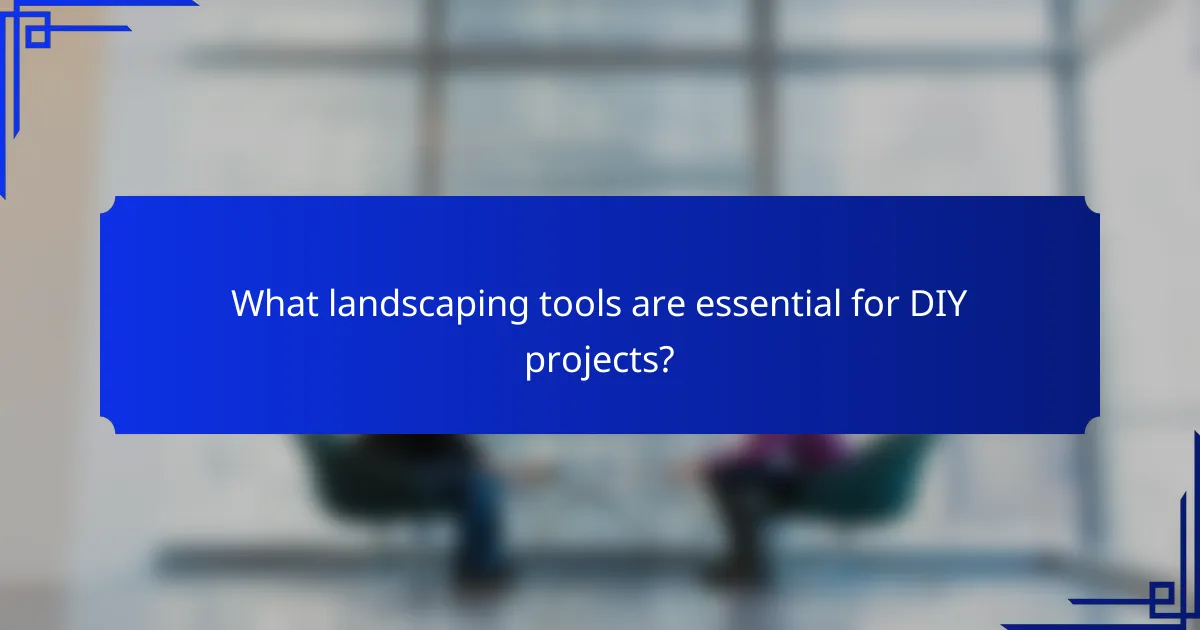Transforming your home’s exterior doesn’t have to be expensive; budget-friendly landscaping ideas can significantly boost your curb appeal. By incorporating low-maintenance plants, creative designs, and DIY projects, you can create a welcoming outdoor space that reflects your personal style while enhancing property value.

What are budget-friendly landscaping ideas to boost curb appeal?
Budget-friendly landscaping ideas can significantly enhance your home’s curb appeal without breaking the bank. By focusing on low-maintenance plants, creative designs, and DIY projects, you can create an inviting exterior that reflects your style and increases property value.
Native plant gardens
Native plant gardens utilize flora that naturally thrives in your region, requiring less water and maintenance. These plants are adapted to local soil and climate conditions, making them resilient and cost-effective choices.
To start, research plants native to your area, focusing on those that attract pollinators like bees and butterflies. Incorporating a variety of heights and colors can create a visually appealing landscape while supporting local ecosystems.
DIY garden beds
Building your own garden beds is a practical way to add structure and greenery to your yard. Use materials like reclaimed wood, bricks, or concrete blocks to create raised beds that can be filled with soil and plants.
Consider the size and location of your beds to maximize sunlight exposure. Planting herbs, vegetables, or flowers can provide both beauty and utility, making your garden more functional and enjoyable.
Rock gardens
Rock gardens are an excellent option for low-maintenance landscaping, especially in areas with poor soil or drought conditions. By combining rocks and drought-resistant plants, you can create an attractive and sustainable garden.
To design a rock garden, select a variety of stones and boulders, then arrange them in a natural-looking layout. Fill in the gaps with suitable plants like succulents or alpine species that thrive in rocky environments.
Mulching techniques
Using mulch is a simple yet effective way to enhance your landscape while conserving moisture and suppressing weeds. Organic mulches, such as wood chips or straw, can improve soil quality as they decompose.
Apply a layer of mulch around trees, shrubs, and flower beds, keeping it a few inches away from plant stems to prevent rot. Regularly replenishing mulch can maintain its effectiveness and keep your garden looking tidy.
Container gardening
Container gardening allows you to add greenery to small spaces or patios without extensive ground preparation. It offers flexibility in design and can be easily rearranged to suit your aesthetic preferences.
Choose containers that complement your home’s style and select plants that thrive in the available sunlight. Consider using a mix of flowers, herbs, and ornamental plants to create a dynamic and colorful display.

How can I enhance my front yard on a budget?
Enhancing your front yard on a budget involves strategic planning and creative solutions that can significantly boost curb appeal without breaking the bank. Focus on simple updates like pathways, flower arrangements, and repurposing materials to achieve an attractive outdoor space.
Low-cost pathways
Creating low-cost pathways can add structure and visual interest to your front yard. Consider using gravel, mulch, or stepping stones, which are often more affordable than traditional paving materials. A simple layout can be achieved by outlining a path with inexpensive bricks or stones found at local home improvement stores.
When designing your pathway, aim for a width of at least 2 feet to ensure comfortable walking space. Curved paths can create a more inviting look, while straight paths offer a more formal appearance. Be sure to maintain the edges to keep the pathway looking neat and defined.
Seasonal flower arrangements
Seasonal flower arrangements can bring vibrant colors and life to your front yard at a low cost. Choose native plants or annuals that thrive in your climate, as they often require less maintenance and water. Planting in clusters can create a more impactful display without needing a large quantity of flowers.
Consider using containers for seasonal arrangements, which allow for easy changes throughout the year. Look for sales at local nurseries or garden centers to find budget-friendly options. Mixing perennials with annuals can provide year-round interest while keeping costs manageable.
Repurposed materials
Using repurposed materials is a sustainable and cost-effective way to enhance your front yard. Items like old wooden pallets, bricks, or even tires can be transformed into planters, garden beds, or decorative features. Check local classifieds or community groups for free or low-cost materials that can be creatively reused.
When incorporating repurposed items, ensure they are safe and suitable for outdoor use. For example, treat wooden materials to prevent rot and decay. This approach not only saves money but also adds a unique character to your landscaping that reflects your personal style.

What are the best plants for curb appeal in urban areas?
The best plants for enhancing curb appeal in urban areas are those that thrive in limited space and require minimal maintenance. Consider a mix of perennials, colorful annuals, and evergreen shrubs to create a vibrant and inviting landscape.
Perennials for low maintenance
Perennials are ideal for urban landscaping as they come back year after year, reducing the need for replanting. Plants like daylilies, hostas, and sedums are excellent choices, as they are hardy and can adapt to various soil conditions.
When selecting perennials, consider their bloom times to ensure a continuous display of flowers throughout the growing season. Grouping perennials with similar water and sunlight needs can simplify care and maintenance.
Colorful annuals
Annuals provide a burst of color and can be easily changed each season to refresh your landscape. Popular options include petunias, marigolds, and zinnias, which thrive in urban environments and can tolerate varying light conditions.
To maximize impact, plant annuals in clusters or borders around perennials and shrubs. This layering creates visual interest and draws attention to your home. Remember to deadhead spent blooms to encourage further flowering.
Evergreen shrubs
Evergreen shrubs are essential for providing year-round structure and greenery in urban landscapes. Varieties such as boxwood, holly, and juniper are low-maintenance options that can withstand pollution and urban conditions.
When planting evergreen shrubs, consider their mature size to avoid overcrowding. They can be used as hedges for privacy or as focal points in your garden. Regular pruning helps maintain their shape and encourages healthy growth.

How do I create a landscaping plan?
Creating a landscaping plan involves assessing your outdoor space, setting a budget, and choosing a cohesive theme. This structured approach ensures that your landscaping enhances curb appeal while staying within financial limits.
Assessing your space
Begin by evaluating the dimensions and features of your yard. Take note of existing plants, structures, and any areas that need improvement or attention. Consider factors like sunlight exposure, soil quality, and drainage, as these will influence plant selection and layout.
Sketch a rough layout of your space, marking key elements such as walkways, patios, and garden beds. This visual representation will help you see how different components can fit together harmoniously.
Setting a budget
Establishing a budget is crucial for a successful landscaping plan. Determine how much you are willing to spend, considering both materials and labor. A typical range for basic landscaping projects can be anywhere from a few hundred to several thousand dollars, depending on the scope of work.
Prioritize your spending by identifying essential elements versus nice-to-haves. Allocate funds for soil amendments, plants, and hardscaping materials, while leaving room for unexpected expenses that may arise during the project.
Choosing a theme
Selecting a theme will unify your landscaping design and enhance its visual appeal. Popular themes include modern, cottage, tropical, and drought-tolerant gardens. Choose a style that complements your home’s architecture and reflects your personal taste.
Once you have a theme, research suitable plants, colors, and materials that align with your vision. For example, a modern theme might incorporate sleek lines and minimalistic plant choices, while a cottage garden could feature a mix of colorful flowers and rustic elements.

What landscaping tools are essential for DIY projects?
Essential landscaping tools for DIY projects include basic gardening tools, soil testing kits, and efficient watering systems. These tools help ensure that your landscaping efforts are effective, cost-efficient, and sustainable.
Basic gardening tools
Basic gardening tools are the foundation of any landscaping project. Essential items include a spade, rake, hoe, and pruning shears, which can typically be found at local hardware stores or garden centers. Investing in quality tools can make tasks easier and more efficient.
When selecting tools, consider ergonomics and durability. For instance, choose a spade with a comfortable grip and a sturdy blade to handle various soil types. Regular maintenance, such as cleaning and sharpening, will extend the life of your tools.
Soil testing kits
Soil testing kits are crucial for understanding the nutrient composition and pH level of your soil. These kits typically include test strips or solutions that provide immediate feedback on soil health, helping you determine the necessary amendments for optimal plant growth.
Using a soil testing kit can save money in the long run by preventing over-fertilization and ensuring that you only add what your soil truly needs. Many kits are available at garden centers and online, often costing between $10 and $30, depending on the complexity of the tests.
Watering systems
Efficient watering systems are vital for maintaining healthy landscapes. Options range from simple handheld hoses to more advanced drip irrigation systems that deliver water directly to the roots of plants. Choosing the right system depends on the size of your garden and your budget.
For small gardens, a soaker hose can be an affordable and effective solution, while larger areas may benefit from a drip irrigation setup, which can save water and reduce evaporation. Consider investing in a timer to automate watering, ensuring that your plants receive consistent moisture without overwatering.

How can I maintain my landscape without breaking the bank?
Maintaining your landscape on a budget is achievable with a strategic approach. Focus on regular upkeep, smart plant choices, and DIY solutions to enhance your outdoor space without overspending.
Regular upkeep schedule
Establishing a regular upkeep schedule is essential for maintaining your landscape efficiently and cost-effectively. Aim for a routine that includes weekly tasks like mowing, weeding, and watering, which can prevent larger issues and save money in the long run.
Consider seasonal tasks as well, such as mulching in spring and fall clean-up, to keep your landscape healthy. A simple checklist can help you stay organized:
- Weekly: Mow, weed, and water.
- Monthly: Prune shrubs and check for pests.
- Seasonally: Mulch, fertilize, and clean debris.
By adhering to this schedule, you can minimize the need for costly repairs and maintain a vibrant landscape that boosts your curb appeal.
